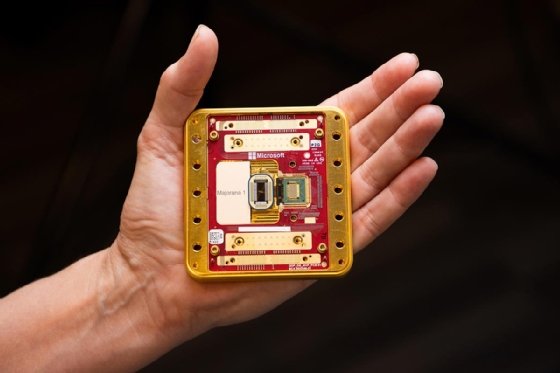
your123 - stock.adobe.com
Microsoft unveils quantum chip Majorana 1 for future advances
Microsoft unveils Majorana 1, a quantum chip with 8 qubits, aiming for 1 million. It focuses on scalability for breakthroughs in various fields despite current challenges.
Microsoft claimed a quantum computing breakthrough that brought it closer to building systems that could one day assist in developing medicines, tackling hard-to-solve environmental challenges, and creating materials for construction and manufacturing.
On Wednesday, Microsoft introduced a quantum chip called Majorana 1. The company said it has the elements needed to scale to 1 million qubits in a palm-sized processor capable of powering more advanced research models than the ones available today. Qubits are the fundamental unit of information in quantum computing.
Quantum chips typically have 50 to a few hundred qubits. A notable exception is IBM's 1,121-qubit quantum processor, Condor, which was unveiled in 2023. Today, Majorana 1 has only 8 qubits, but Microsoft is confident that it can hit the million mark.
"A million-qubit quantum computer isn't just a milestone -- it's a gateway to solving some of the world's most difficult problems," Microsoft technical fellow Chetan Nayak said in a blog post.
Microsoft's path to a scalable quantum processor stemmed from the company's researchers designing and fabricating an indium arsenide and aluminum material stack almost atom by atom to produce, with the help of magnetic fields, new quantum particles called Majoranas. The particles become topological qubits, which means the key features needed to carry data reliably are embedded in the Majorana.
The instability of qubits in quantum systems requires researchers to spend so many resources on error correction that the number of reliable qubits is insufficient for large-scale computing. Microsoft claims that its Topological Core architecture solves that problem.

Last December, Google's research initiative Quantum AI unveiled the 105-qubit Willow chip with a scalable error correction method. AWS has also publicized such quantum advancements.
Google published a technical paper on its architecture in the journal Nature. Microsoft also published a paper on its architecture, which differs from Google's.
"Quantum is seen as the next big thing in computing," said Jack Gold, principal analyst at J.Gold Associates. "The trouble is that there isn't one technique. There's still a lot of experimentation."
Practical quantum computers for enterprises are years away, but less than the 20 years predicted by Nvidia CEO Jensen Huang in January, Gold said.
"In five to 10 years, we will have useful quantum computers," he said. "We already have a few really small ones. They're not great because they're tiny."
Quantum computing systems are mainly sold to research institutions and organizations running specialized applications. D-Wave Systems is an example of a quantum computer maker.
For quantum computing to become mainstream, a lot of supporting technology must be developed, such as programming languages to write applications. Also, quantum computers today need near-zero temperatures to operate, an expensive requirement that remains one of the biggest challenges to commercializing the systems.
"A research project is one thing, but building a cost-effective system that people can afford to use is a different battle," Gold said.
Microsoft and PsiQuantum were two companies recently chosen by the Defense Advanced Research Projects Agency to participate in its program to design an industrially useful quantum computer by 2033.
Microsoft makes its quantum hardware and has partnered with Quantinuum and Atom Computing to develop a joint quantum system.
Antone Gonsalves is an editor at large for Informa TechTarget, reporting on industry trends critical to enterprise tech buyers. He has worked in tech journalism for 25 years and is based in San Francisco. Have a news tip? Please drop him an email.






